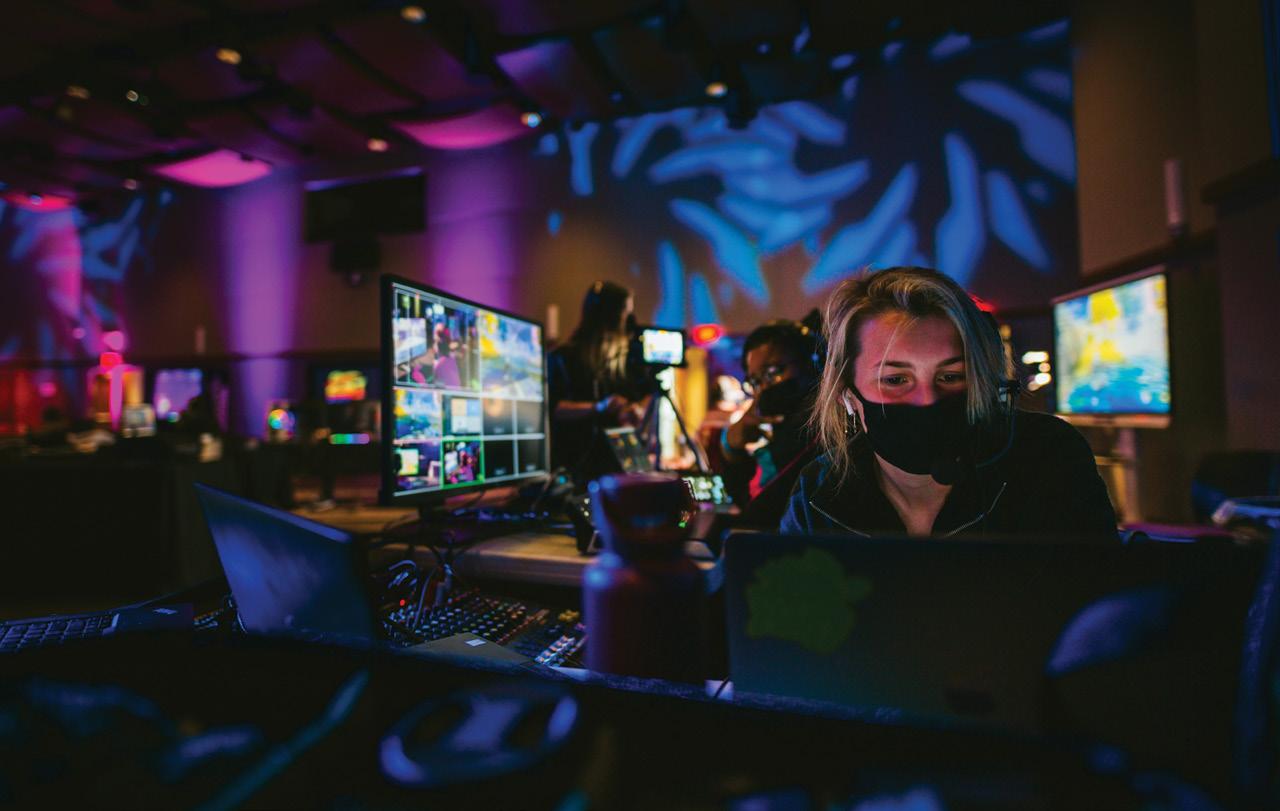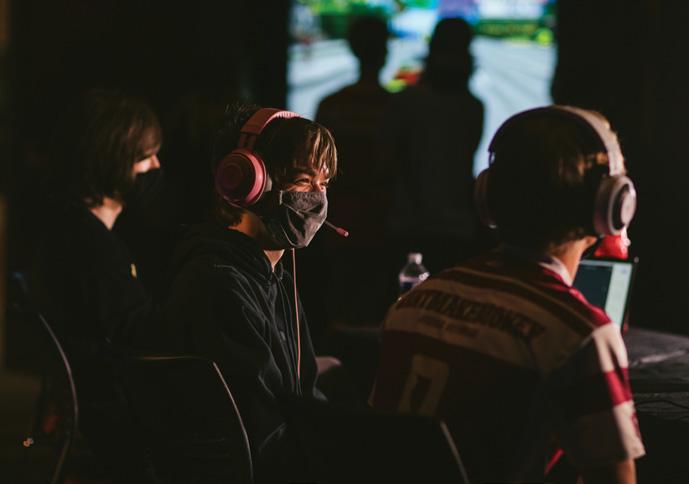
4 minute read
Game On
Rebecca Jones ’21 broadcasts the action from the spring LAN party
The Future of Esports at Cannon
As the clock on the scoreboard ticks down, Patrick Mahomes scans downfield, searching for a receiver. His eyes catch Tyreek Hill, who has slipped past San Fransico’s Charlie Woerner, and appears wide open. Mahomes’ throw is clean, connecting with Hill, who takes it into the endzone for a touchdown. Thousands of Chiefs fans shake the stadium with cheers and screams, thrilled their team has captured the lead. It’s a typical NFL football game in every way but one.
The action isn’t taking place at Arrowhead Stadium. Instead, it’s in the CPAC, during this spring’s LAN (Local Area Network) Party, in which forty Cannon students participated in an activity that’s rapidly gaining popularity—esports.
So, what exactly is esports? The high-level definition is competitive, organized video gaming. Esports’s story began in South Korea in the early 2000’s, when the government there focused on developing their internet and telecommunications infrastructure. Quickly, a wildly popular type of social space emerged, which became esports. Over the last twenty years, organized, multiplayer competitions in which players engaged in games like League of Legends, Overwatch, and Fortnite gained wild popularity—along with the industry’s earnings. 2020 revenue from esports topped out at 947.1 million dollars, and it’s predicted to grow to 1.62 billion in 2024. If you still aren’t convinced esports is here to stay, consider this: the last League of Legends World Championship (in 2019) drew more viewers than that year’s Super Bowl. Even elite institutions of higher education are getting in on esports— the University of North Carolina at Chapel Hill just finished the Carolina Gaming Arena, a six-figure project that features thirty-six PC stations, three game console zones, and a sixteen-foot gaming wall comprised of screens.
With such a spike in popularity, it came as no surprise to discover that many Cannon students were already competing from home. Mr. Bill Donovan, director of institutional technology, approached members of his IT team and suggested they visit High Point University, whose club team competes against other colleges. High Point had just renovated a space to become an esports facility. Mr. Tram Tran, manager of information technology, and Mr. Andrew Legra, technology support technician, took the trip up I-85, as well as a visit to Harrisburg University in Pennsylvania, which fields one of the country’s top esports teams.
What they witnessed was a far cry from kids simply messing around with video games. “It allowed kids to do more than just play—it was a whole STEAM program. There was video editing, capture, marketing the program. And as far as the competition piece, it was kids competing as teammates in which each is required to complete a special task. It plays to each person’s different talents. We were like, this is it.”
When Tran and Legra returned to Cannon, they started talking to administration about the possibility of a space in which students could play esports—and then COVID hit. “We couldn’t go anywhere, so a lot more people started playing from home. Our group got to be really close and tight knit over the summer, and they started telling their other (Cannon) friends about it. So, by the time we came back to school in the fall, we had about 100 people involved, including alumni, teachers and students.” Cannon School gaming, or CSG, was born.
In the fall, CSG organized a COVID-safe LAN party outside, in which forty Cannon students showed up to work together in teams and compete in the games of Fortnite, League of Legends, Rocket League, and Overwatch. Another LAN party followed in the spring, with even more students in attendance.
The spring LAN party received a lot of attention, and shortly after an anonymous donor stepped in to ask how they could help. This summer, the media production studio in The Mill will be outfitted with thirty new computers, and one dedicated machine for broadcasting (which includes internet and HVAC upgrades to support the addition). The new space will serve as a communal place to practice and compete.
Tran has high hopes for the program, which he will help coach (along with other staff and faculty members). He recognizes that more and more colleges are actually offering esports scholarships to students who can not only play well, but also capture and edit video, photograph, and market themselves.
“Since colleges are investing millions of dollars in esports facilities, they want to make sure they have players,” Tran continued. And professional gamers are not the only end goal—in coming years, it's predicted that there will be tens of thousands more jobs in the esports sector. “Colleges know there are companies that need to hire people who are savvy about both esports and business. The future is a person who has both.”
than just play—it was a whole

Tyler Smith ’22 shares a laugh from the broadcasting booth Ryan Ramirez ’23 finished first in the Fortnite competition this past spring










